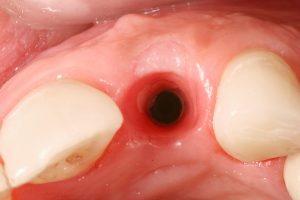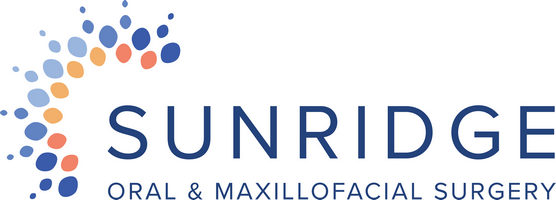Wow, great experience having my wisdom teeth removed which I never thought I’d ever say. Clinic was very organized, all the staff I dealt with was very friendly and helpful, and the extraction and aftercare was excellent. I’d get my teeth removed there again if I could! Very happy!
General Information

We now have the ability to grow bone where needed. This not only gives us the opportunity to place implants of proper length and width, it also gives us a chance to restore functionality and esthetic appearance. There are different types of bone grafting procedures that can be done. During your consult, your doctor will recommend the best treatment options. Together, you will decide the best approach for you.
Socket Preservation (Ridge Preservation)
For this procedure, artificial bone grafting material is added to the extraction socket immediately after removing the tooth/root. This preserves the pre-extraction bone width and prevents bone atrophy. The placed bone is then covered with gingival tissue (gum tissue) or an artificial membrane to encourage your body’s natural ability to repair the socket. With this method, the socket heals simultaneously while eliminating shrinkage and collapse of the surrounding gum tissue and bone. Once the newly formed bone in the socket has matured, the foundation for an implant is available to replace the tooth.
Sinus Lift Procedure
The maxillary sinuses are behind your cheeks and on top of the upper teeth. These sinuses are empty, air-filled spaces. Some of the roots of the natural upper teeth extend up into the maxillary sinuses. When these upper teeth are removed, there is often just a thin wall of bone separating the maxillary sinus and the mouth. Dental implants need bone to hold them in place. When the sinus wall is very thin, it is impossible to place dental implants in that area. The key to a long successful lasting implant is the quantity and quality of jawbone. Sinus augmentation can raise the sinus floor and allow for new bone formation. The sinus lift procedure is an extremely useful and successful method of grafting. A small window is made into the side of the sinus, the sinus lining is carefully elevated and artificial bone grafting material is placed onto the sinus floor. Once the graft has matured, the implants can be placed. The sinus graft makes it possible for many patients to have dental implants where years ago there was no other option besides wearing loose dentures.
Ridge Augmentation
In severe cases, the ridge (jawbone) has been resorbed (worn down) and a bone graft is placed to increase the ridge width, and to a lesser degree, the height. Typically, this involves, either artificial bone grafting or the patients’ own bone. If the patients’ own bone is used, this is usually removed from the mandibular ramus (behind the lower wisdom teeth) or chin. If indicated, we use resorbable collagen membranes and miniature bone screws to stabilize the grafting material. Although sometimes necessary for successful implant treatment, these procedures will increase the time frame for overall implant completion as the bone grafts take 3 to 6 months to heal.
Extensive Bone Grafts
In more extensive situations, a greater quantity of bone can be obtained from the hip, the outer aspect of the tibia below the knee, the ribs and the skull. These surgeries are done at the hospital under general anesthesia.
Bone Graft Materials
To better serve our patients, we utilize all types of bone grafting materials including:
- Autogenous: patients own bone
- Allograft: donor or cadaveric freeze dried bone
- Xenograft: bone graft from another species (i.e. bovine, porcine)
- Alloplast: man-made synthetic bone material


